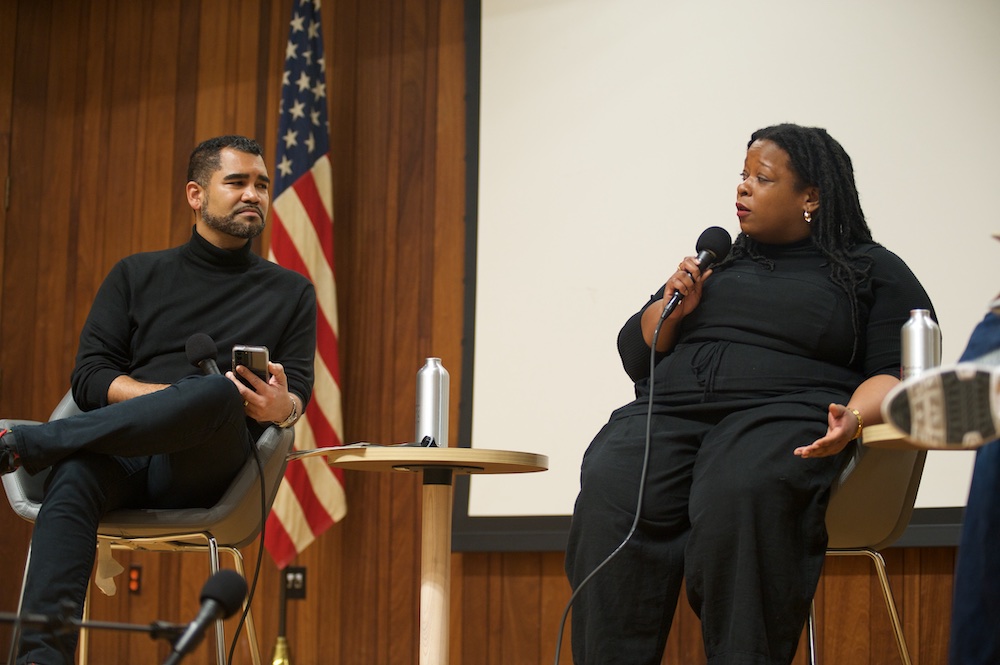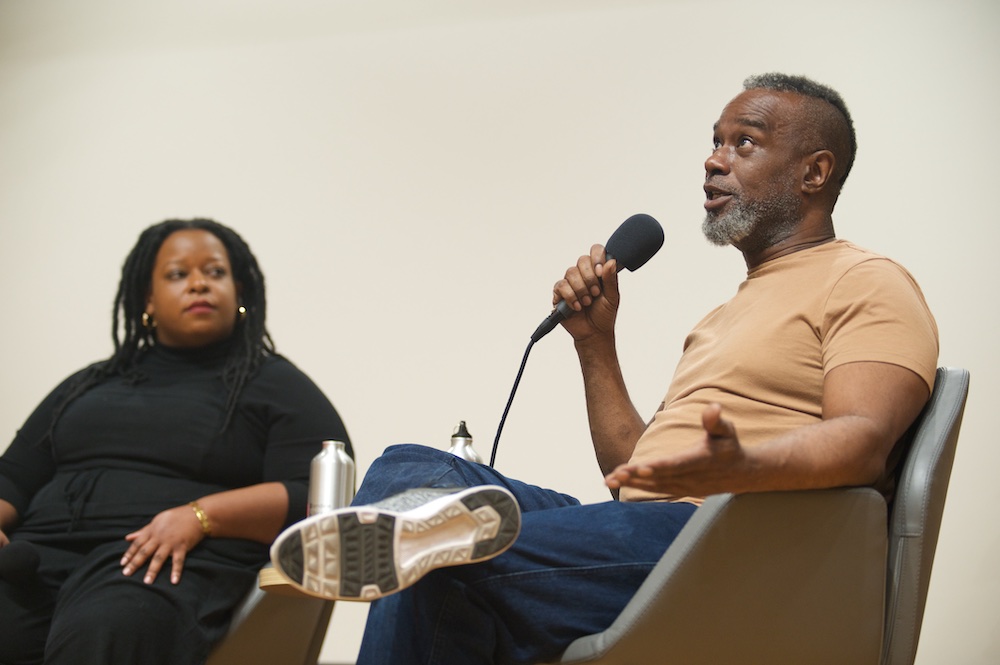Artillery Magazine Hosts Panel at the Glendale Library to Discuss “Black Diaspora Emerging”


Los Angeles-based Artillery Magazine has explored the global realm of contemporary art for almost two decades, fearlessly showcasing the obscure and unorthodox with an emphasis on Southern Californian creation. Known for their refreshingly grounded approach to the contemporary art space, where reviews and opinions can seem convoluted for the sake of convolution. Artillery breaks things down to digestible pieces while encouraging readers to think critically and connect what they’re seeing in the art world to other cultural spheres.
Centering on Black art, the magazine’s January/February 2023 issue – titled “Black Diaspora Emerging” – features work from some of the world’s most prominent Black artists of the decade: like Nigerian curator Adenrele Sonariwo’s love letter to lagos, Trinidadian-American artist Allana Clarke’s frank storytelling of hair bonding glue, and Chicago rapper and activist Chance the Rapper’s amplification of Black art. The issue offers a range of Black artwork for readers to consider – from curation and performance art to photography and abstraction.
Writers Donasia Tillery and Donnell Alexander took to Glendale Library to guest a panel to discuss featured artists, how social media allows for a new form of intimacy, and the pair’s upcoming work. While moderator Demetri Broxton of San Francisco’s Museum of the African Diaspora created space for a thoughtful conversation between Tillery and Alexander.

Artillery Panel Centers Blackness
The pair tackled topics like Black art in all of its mediums, the ease with which we can understand one another with social media accessibility (and what sort of effect that might have on cultural relations), and what “Black diaspora emerging” means to them.
“The way that I tend to think of a diaspora is: if you systematically strip a people of language, religion, traditions, a homeland, then those kind of tangible things that would connect a community are no longer accessible. And so now people are connecting in ways that are intangible…a structure of feeling,” Tillery said.
“Like Chance’s song Cocoa Butter Kisses…I listen to that song and I can recall the feeling of Black elders, and the effect attached to that. For me, when I think of Blackness, I think of certain emotional experiences that you simply cannot have if you’re not inhabiting a Black body in this world.”
Black Art: Cloaked in mystery both within and surrounding the community
For as much as Black communities around the world can intuitively understand one another’s lived experiences, there’s something of a “cloak of mystery” surrounding Black culture that was born from having to be mysterious for survival – something Artillery’s latest edition hopes to begin to unveil.
“The thing Paul Mooney would always say was, ‘We were in the house,’” Alexander said.
Tillery agreed, adding, “There’s real intimacy in the experience of having to understand what might tick another person off – and that might actually have lethal consequences for you. On the flip side, there’s a way that Black experience is often cloaked in a lot of mystery.”
Because of this idea, Tillery wondered if voyeurism and Black art innately go hand in hand for non-Black viewers.
“I just think that for non-Black people, there’s still a lot to learn about what it means to exist as us,” Tillery said.
Alexander agreed, while taking the point a step further to remind listeners that Black art isn’t created for anyone’s approval or consent – and that within the Black diaspora, there’s also a level of cultural understanding that still needs to be considered and extended.
Tillery recalled coming back from a recent South Africa trip, and the experience of being confronted by a Black elder with a series of “really offensive questions.”
“This is someone who didn’t have access to social media – who was taking in American media that only represented Africa in one way. Social media has changed a lot. The experience that I had…of someone thinking that I came from this archaic place…I think it’s a little more challenging now to think in that way when you can witness what someone’s doing this morning in Cameroon,” Tillery said.
“There’s a different kind of intimacy we’ve been able to reach through social media that I think can be really productive in terms of diaspora consciousness that is not as weighed down by those kinds of perceptions.”
Broxton wrapped up the conversation by asking Tillery and Alexander to discuss their latest artistic endeavors: for Alexander, a comprehensive profile on artist Henry Taylor and safety on the train, and for Tillery, a show review and a deep dive into reexamining the way she writes.
“I think what’s really complicated about art writing is that, oftentimes we write from a purely intellectual space, which doesn’t always resonate for me,” Tillery said.
“I’m always writing about art in a way that is trying to articulate how I’m experiencing it, and hopefully walking people through what it means to have a real encounter with an aesthetic that moves you.”
You Might Also Like
HOUSING Gallery: How Legacy and Community Guide the Fierce Supporters of Artists of Color
An Important Role Model: Allison Glenn, Associate Curator at Crystal Bridges
What's Your Reaction?
Guest Contributor, Cultbytes Fashion assistant at Harper's Bazaar and freelance writer with a seemingly unquenchable thirst for fashion and how it relates to other industries. Engle has a B.A. in Communications and Journalism from California State University-Fullerton. Her work has been published in The OC Weekly, La Habra Journal, Forever Twenty-Something, among others. l instagram l contact l

